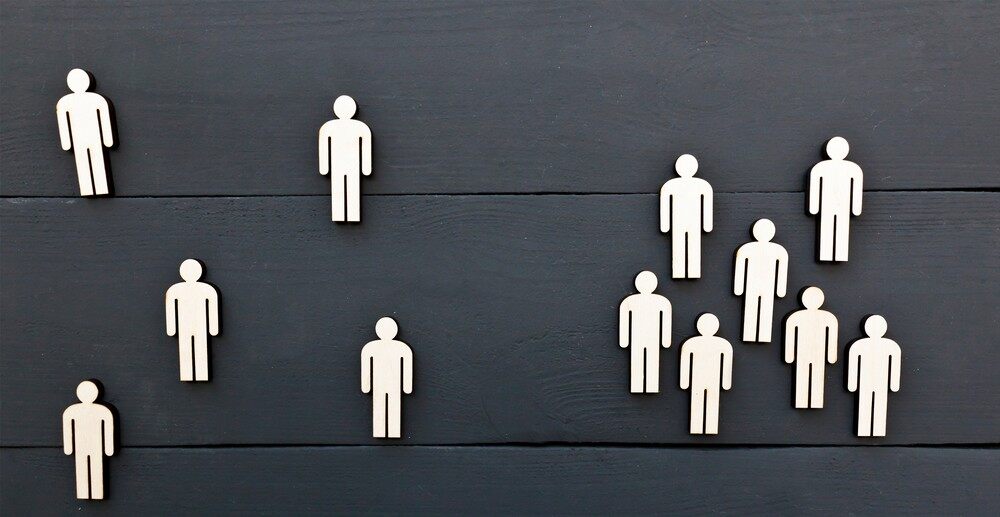

Image: Shutterstock.com
Politicization of the COVID-19 pandemic had a powerful influence over adherence to social distancing guidelines in the United States and why people did, or did not, comply during the lockdown days, a new study has found.
The analysis boiled down to whom study participants trusted most: scientists or President Donald Trump.
“People who expressed a great deal of faith in President Trump, who thought he was doing an effective job of guiding us through the pandemic, were less likely to socially distance,” said Russell Fazio, senior author of the study and a professor of psychology at The Ohio State University. “In contrast, the people who expressed a great deal of trust in scientists showed the exact opposite pattern: They were more likely to engage in social distancing.
“We were getting two-sided messages at the time from our government officials and public health scientists, so we had these two sources that were, in effect, working in opposition to one another. That pointed to the politicization of the pandemic.”
The study is published today (Feb. 24, 2021) in PLOS ONE.
Fazio’s lab studies how personal beliefs and attitudes influence behavior. When COVID-19’s emergence in the United States led to lockdowns and stay-at-home orders, the national directive to socially distance became an enormous science experiment.
“On the basis of everything we’ve known for decades of social psychology, it seemed clear that people’s pre-existing beliefs would affect their interpretations of the seriousness of the pandemic and the extent to which they would comply with these recommendations,” Fazio said. “We thought we needed to directly assess that empirically, find out who was indeed complying or not complying, and get some idea about which beliefs mattered.”
According to the authors’ theoretical framework, three components were at play when the information campaign began: the source of the message, what kind of challenge the context presented – is the virus really a threat? – and the self-views of the targets, in this case the entire U.S. population.
The researchers recruited participants from Amazon’s Mechanical Turk crowdsourcing marketplace. The sample in this study consisted of 2,001 U.S. adults representing a range of ages, geographic locations and political ideologies.
The team surveyed the participants in early May about their personal beliefs on a range of issues associated with the pandemic: how much they trusted the sources of information, the extent of their worry about the dangers of the virus, and how concerned they were for others’ vulnerability to getting sick. Did they believe in the value of science, trust the federal government’s handling of the pandemic, weigh economic concerns over public health, consider themselves compassionate?
“We were interested in the extent to which an individual had a self-view as a compassionate person, because at least part of the reason we were all engaging in social distancing was to protect one another. We were also interested, because of all of the misinformation that was floating around, in people’s general tendency toward conspiratorial thinking,” Fazio said.
Questions about beliefs and political leanings were combined with a knowledge check: a true-or-false quiz on 13 facts and myths about the coronavirus.
To gauge participants’ social distancing behavior, the researchers presented study participants with 10 virtual behavior scenarios of various public settings – a grocery store, a crowded beach, a crosswalk – and asked them to place themselves or fictional people in those contexts based on their social distancing preferences. Though the researchers also asked participants to self-report their social distancing practices, the virtual scenarios requiring “in the moment” decisions about reactions to different situations were considered more representative of how people actually behaved in real life.
In fact, a recently published study involving follow-up data showed that the more participants demonstrated a preference for social distancing in the virtual scenarios, the less likely they were to have gotten sick with COVID-19 in the subsequent four months – a finding that established the validity of the virtual measures.
Statistical analyses revealed several correlations. Trust in scientists, support for the guidelines, belief that the virus threat was not exaggerated, concern about its spread, general science literacy and COVID-19 knowledge were strongly associated with the practice of social distancing. Trust and confidence in President Trump and the federal government’s effectiveness, belief in conspiracy theories, a political lean toward conservatism and an opinion that economic health was more important than safety were linked to lower odds of practicing social distancing.
Fazio said the findings may make one wonder what might have been had the U.S. populace been exposed to more consistent messaging.
“If there had been a single coherent voice communicating information, leading people to understand how serious the threat was and encouraging all of these preventive behaviors, including social distancing, I think we would have seen far more compliance,” he said. “That is what comes through the data very clearly.”
This work was supported by the National Science Foundation. Co-authors include Benjamin Ruisch, formerly an Ohio State postdoctoral researcher now at Leiden University, and graduate students currently in Fazio’s lab: Courtney Moore, Javier Granados Samayoa, Shelby Boggs and Jesse Ladanyi.








































